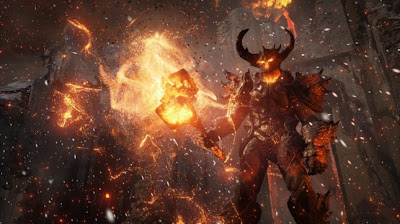Last week I discussed the basics of particles in video games. This included a basic overview of what particles and particle systems are, different implementations, and why particles are important in video games. However there are also limitations to what I discussed. CPU rendered particles are greatly inefficient and limited in their ability to look good. This week, I will discuss how to improve upon CPU based rendering by utilizing frame buffer objects (FBO's) and geometry shaders.
The premier way to render any graphics system is through the graphics processing unit, or simply the GPU. The GPU is designed to rapidly build images in a frame buffer to be displayed. GPU's are incredibly common in almost any modern day device such as: mobile phones, personal computers, game consoles, etc. GPU's are very effective at rendering computer graphics because of how it can take blocks of data and process it in parallel. For a particle system, being able to render out blocks of data in a fast and effective manner is critical to producing desirable particles.
FBO's
The question is, for a particle system, why use FBO's to help render your particles? What is a FBO? A frame buffer object is an extension to OpenGL for doing off-screen rendering. This includes rendering to a texture. By taking what would normally be drawn to screen, it can be used to apply various types of post-processing effects and image filtering. That being said, FBO's are used primarily for post-processing of rendered images (for example bloom, blurring), and composition between different scenes.
Geometry Shaders
Geometry shaders also represent a way to improve your particle system. A geometry shader, in short, is a GLSL shader that administrates the processing of primitives. In regards to the OpenGL pipeline, it happens after primitive assembly. They can also be used to create new primitives which in turn can be used to help render out textures to quads, a common practice for particle coders. Geometry shaders have several advantages:
- Unlike vertex shaders, a geometry shader can create new primitives.
- Can do layered rendering. This means it can render different primitives to different layers in the frame buffer.
- Excellent for rendering primitives.
How does this help programmers?
A particle programmer would be very wise to maximize the efficiency benefited from FBO's. Rendering to a texture will allow the programmer to create much more realistic effects, while applying different post-processing effects to give them the desired look. This is not the only benefit however, because of the additional speed and parallel rendering, a video game will be able to support many emitters handling many different particle systems that utilize all sorts of different effects. Not only will particles render faster, they can also achieve maximum appeal for the minimal cost.
A geometry shader is an incredibly powerful tool to a programmer. While FBO's assist with rendering, a geometry shader can create new primitives quickly. Many programmers will often render their particles to different primitives such as planes, spheres, or other shapes. This means that their emitter will render quickly because of FBO's and can also create new primitives using geometry shaders
Examples
Crysis is a good example of a game that utilized geometry shaders in their particle systems.
In this image, the geometry shader could randomly generate the line bursts shooting outwards from the central explosion as well as trail size and intensity. This way, the game can have a unique explosion every time.
For similar reasons as above, the game can enhance player experience by adding in uniqueness to every explosion effect.
In Conclusion
To sum up this two-part blog about particles, they are a great method for achieving a wide array of different effects in video games. They can be used to set a mood in a game and to enhance a players experience. Particle systems, especially good ones, are most certainly a challenge to any proprogrammer. Thank you for reading, comment and rate!




No comments:
Post a Comment